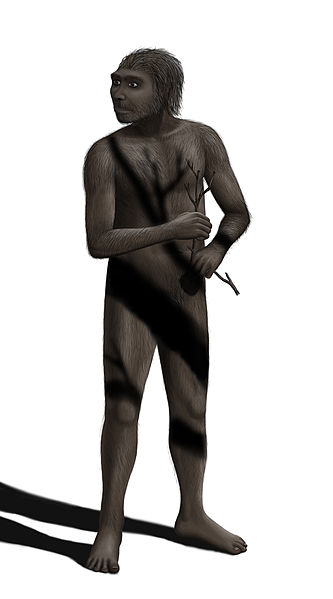We're open daily this holiday! View holiday hours
Science News
Hairless Humans
February 22, 2013

Have you had the chance yet to visit the new Human Odyssey exhibit here at the Academy? It takes you through the evolutionary journey of our species, pointing out milestones along the way such as upright walking, tool-use, tool-making, and our big brains.
But what about hair? Unlike most primates, we are almost entirely without body hair. When did this milestone happen and why? At the AAAS meeting last weekend in Boston, brilliant anthropologist and Academy fellow Nina Jablonski addressed this topic in “Beyond Fur: Sweating and Barrier Features of Human Skin.”
Establishing when hominins lost hair is tricky because hair is not easily traceable in the fossil record. Well, not directly, but Jablonksi argues that indirectly, it is. Look at Turkana Boy, she says. He was built for fast movement. The fossil record indicates he was capable of high speed walking and running locomotion and with this body type, Jablonski explains, he had to be able to liberate excess body heat.
We lost hair to lose that excess body heat, for basic thermal regulation. But losing hair wasn’t the whole story. We also became better sweaters, says Jablonski. Humans have an extraordinary number of eccrine sweat glands that make us very efficient at eliminating heat.
So when did all of this happen? About one million years ago in our lineage’s history, determines Jablonski. And how did it happen? Geneticists are still figuring that out. We’re lucky it did happen! Jablonski believes this efficient cooling system helped keep our large tissues and organs (think of our big brains) cool and safe.
It’s also very likely that these early humans became darkly pigmented around the same time we lost our hair. Prior to losing hair, hominins likely had light skin with dark fur, like chimpanzees. Darker pigmentation would have provided protection from UV rays in the dry environments of equatorial Africa.
The new exhibit offers further explanations for the variation of skin color within Homo sapiens. As our species migrated north, to areas less warm and sunny, skin pigments adapted to absorb more UV rays. One of the more interesting aspects of this change in pigmentation, Jablonski explains, is that this mutation occurred independently as humans migrated northerly in different directions.
Be sure to attend Nina Jablonski’s lecture about skin color, at the Academy this May. For more on hairless humans, check out her article in Scientific American.
Home erectus drawing: Steveoc 86/Wikipedia